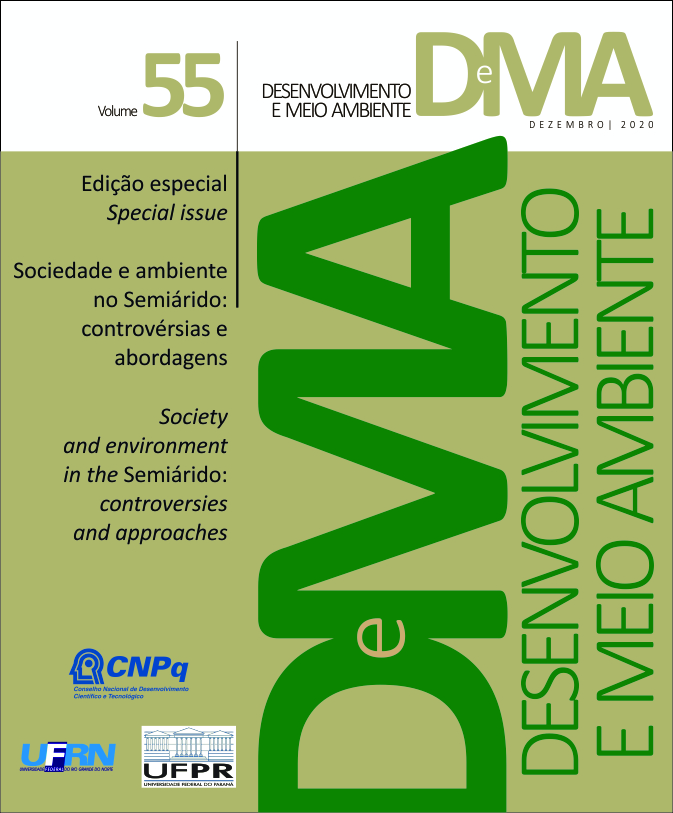Desertification in Seridó in Rio Grande do Norte and Paraíba: land issues, rural poverty and illiteracy
DOI:
https://doi.org/10.5380/dma.v55i0.73346Keywords:
brazilian semiarid, socioeconomic indicators, rural populationAbstract
A study carried out in Seridó of the Paraíba and Rio Grande do Norte analyzed the desertification phenomenon based on the survey of socioeconomic, environmental and institutional indicators, organized in driving force, pressure, state, impact and response. The main goal of this research was to deepen the discussion about the driving force indicators and to investigate their relationship with the environment. The selected indicators were land concentration (rural establishments area smaller than the fiscal module and under non-property regime) and inequalities in the countryside (rural population below the poverty line and illiteracy), which represent structural or indirect desertification causes. The methodology used was a bibliographic review and data systematization on land ownership, education and income of 32 municipalities in the Seridó in Rio Grande do Norte and Paraíba. Seridó of Rio Grande do Norte has the greater number of large properties and predominates settlers with no title, tenants and landless producers. In the Western and Eastern Seridó of Rio Grande do Norte and Paraiba, respectively, there are higher illiteracy rates. In the Seridó of Paraiba predominates smallholdings and rural population below the poverty line. In the Eastern Seridó of Paraiba sharecroppers and occupiers are predominant, while in the Weastern Seridó region the ones predominating are tenants and occupiers. The relationship between the indicators studied and the environment is variable, and therefore, dependent on local dynamics.
Downloads
Published
How to Cite
Issue
Section
License
Copyright on works published in this journal rests with the author, with first publication rights for the journal. The content of published works is the sole responsibility of the authors. DMA is an open access journal and has adopted the Creative Commons Attribution 4.0 Not Adapted (CC-BY) license since January 2023. Therefore, when published by this journal, articles are free to share (copy and redistribute the material in any medium or format for any purpose, even commercial) and adapt (remix, transform, and create from the material for any purpose, even commercial). You must give appropriate credit, provide a link to the license and indicate if changes have been made.
The contents published by DMA from v. 53, 2020 to v. 60, 2022 are protected by the Creative Commons Attribution-NonCommercial-NoDerivatives 4.0 International license.
DMA has been an open access journal since its creation, however, from v.1 of 2000 to v. 52 of 2019, the journal did not adopt a Creative Commons license and therefore the type of license is not indicated on the first page of the articles.




